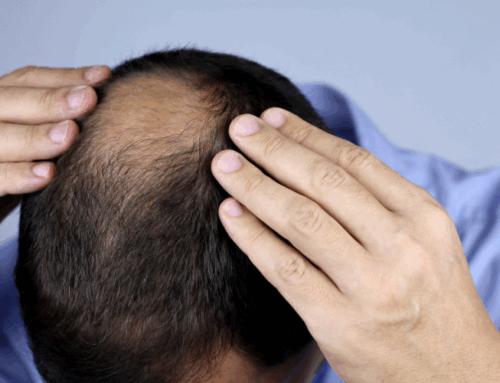Have you ever stared at your hair in the mirror and thought, “Is it time for a trim, or am I being too picky?” If you’ve asked yourself that, you’re not alone. One of the most common grooming questions men have is: How often should I get a haircut? And the answer depends on much more than just your hair length. Factors like your hairstyle, hair type, lifestyle, and even how fast your hair grows all play a crucial role.
This in-depth guide from the experts at Five Star Barber Brand helps decode the ideal haircut schedule for every man, even if you’re keeping a sharp skin fade, growing out waves, or maintaining a medium-length look for versatility. You’ll also learn how regular trims can affect your hair health, growth, and appearance.
How Often Should You Get a Haircut?
The frequency of men’s haircuts should always reflect the style you’re maintaining. A buzz cut or fade, for instance, can start to look noticeably unkempt just two weeks after your last appointment. On the other hand, if you’re sporting longer, layered hair, your style can often last six to eight weeks before needing attention.
Short hairstyles generally require upkeep every 2–4 weeks. This keeps the edges sharp and the style consistent. For medium-length hair, like a textured crop, side part, or pompadour, you can stretch your visits to 4–6 weeks. Longer hairstyles, such as shoulder-length waves or shaggy layers, are typically trimmed every 6–8 weeks to keep ends healthy without compromising length.
Choosing the right timing is also about personal grooming standards. If you work in a corporate setting, prefer a clean-cut image, or regularly attend social events, more frequent cuts might be worth the investment.
Short Hairstyles (Buzz Cut, Crew Cut, Fades): Every 2–3 Weeks
Men with shorter styles, especially fades, buzz cuts, or tight tapers, need more frequent cuts to maintain clean lines. These haircuts grow out faster in appearance, meaning even small regrowth can change the look drastically. Every 2–3 weeks is the sweet spot for these cuts.
Fade haircuts in particular demand regular maintenance. High fades and skin fades start to blur just 10–14 days after a cut, losing their precision. If you want to keep a fresh, sharp fade at all times, biweekly trips to your barber are a must.
Short styles are great for those who value low daily maintenance but are okay with more frequent barber visits.
Medium-Length Hairstyles (Pompadour, Comb Over): Every 4–5 Weeks
Medium-length hairstyles provide a good balance between style and manageability. They’re long enough for versatile looks and styling options, but short enough to avoid long-term maintenance headaches. These styles include pompadours, side parts, messy crops, and modern mullets.
Typically, men with medium hair should visit the barber every 4–5 weeks. This helps retain the shape and prevents the hairstyle from growing out into an awkward in-between length. Barbers can also clean up the neckline and ears during trims, which goes a long way in keeping your look tidy.
Long Hairstyles (Shoulder-Length or Longer): Every 6–8 Weeks
If you’re growing your hair long or maintaining a longer look, you can go 6–8 weeks between haircuts. That said, even long hair needs maintenance, particularly to address split ends and uneven growth. Trims help your hair look fuller and prevent breakage, which is essential for anyone looking to grow their hair out with intention.
For best results, work with a barber who understands long hairstyles. This ensures you retain length while keeping it healthy and shaped properly.
Specialty Cuts (Skin Fade, Drop Fade, Undercut): Touch-Up Every 2–3 Weeks
Specialty cuts like skin fades, drop fades, and undercuts require higher upkeep. These styles emphasize sharp contrasts and clean transitions, which can start to fade within just a week or two. A skin fade, for instance, can lose its tight look quickly as hair grows back, especially at the neckline and temples.
Touch-ups every 2–3 weeks help maintain their defined appearance. If you’re combining these cuts with beard trims or edge-ups, syncing appointments can streamline your grooming routine.
What Determines Your Ideal Haircut Schedule?
Understanding how often men should get haircuts goes beyond just hair length. Your lifestyle, genetics, grooming habits, and hair type all play a role in shaping your ideal schedule. There’s no one-size-fits-all rule, it’s about creating a personalized rhythm that keeps your hair looking its best.
1. Hair Growth Speed & Genetics
Some guys notice their hair growing like weeds, while others feel like it takes forever. That’s because hair growth rate is largely determined by genetics. On average, hair grows about half an inch per month, but this varies from person to person. If you have a faster growth rate, you may need haircuts more frequently to keep your style intact.
Men who maintain short styles like fades or buzz cuts especially notice regrowth sooner and may require trims every 2 to 3 weeks. For men with slower growth, you might get away with spacing out your visits to every 5 to 7 weeks, depending on your preferred look.
2. Lifestyle: Job, Social Events, Image Maintenance
Your lifestyle significantly influences your haircut frequency. If you work in a client-facing role, have frequent meetings, or attend high-profile events, your grooming needs are naturally more frequent. A fresh haircut can boost confidence and help maintain a polished, professional image.
On the flip side, if you work remotely or have a more casual routine, you might feel comfortable stretching the time between cuts. However, even casual styles can benefit from regular shaping, especially around the neckline and sides where growth is most noticeable.
3. Preferred Style & Fade Longevity
Not all hairstyles age the same. A fade haircut, for example, looks sharp for only a couple of weeks before losing its crisp definition. High-maintenance styles like undercuts, skin fades, and sharp edges require bi-weekly touch-ups to maintain their signature look.
In contrast, longer, textured, or layered styles offer more flexibility. These can grow out more naturally and require fewer appointments. Your personal tolerance for “grown-out” looks and your style goals will help determine the right frequency for you.
4. Hair Type: Straight, Curly, Coarse, Fine
Hair texture affects how your cut looks as it grows out. Fine or straight hair tends to show length changes and uneven edges more quickly. As a result, men with straight or thin hair might need to visit the barber more often to keep their style in check.
Curly, coarse, or wavy hair types usually offer more leeway. The texture can mask regrowth better, making it easier to go longer between cuts. However, curls also require shaping to avoid bulkiness or uneven length, so regular trims are still essential, just maybe every 5–7 weeks instead of every 2–4.
5. Personal Grooming Routine
Are you someone who styles your hair daily, or do you prefer a wash-and-go approach? Men who actively style their hair tend to notice shape changes and growth faster, especially if your style depends on a specific silhouette or volume.
If your grooming habits are minimal, and you don’t rely heavily on styling products or tools, you might not feel the need for frequent cuts. But regardless of your routine, maintaining a consistent schedule ensures your barber can keep your hair healthy, even if changes are subtle.
Does Getting Haircuts Frequently Improve Hair Health?
There’s a lot of debate about whether cutting your hair often actually improves its health. While there are definite advantages, it’s important to separate fact from fiction.
Busting the Myth: Haircuts vs. Hair Growth
Let’s be clear: cutting your hair doesn’t make it grow faster. Hair growth originates from the scalp, specifically the follicles, and trimming the ends doesn’t impact that biological process. This common myth has been debunked by dermatologists and trichologists alike.
What trimming does do is prevent damaged or split ends from traveling up the shaft, which could lead to breakage and a shorter overall length. So, while cuts don’t increase your growth rate, they help maintain the length and fullness of your hair over time.
The Real Benefits: Split-End Removal, Shape, & Scalp Care
Regular trims help keep your hair looking healthy, thick, and well-shaped. Split ends can make your hair look frizzy, dull, and less defined. By snipping them off every few weeks, especially if you style your hair with heat or have color treatments, you’re giving your hair the chance to grow out stronger.
Also, consistent cuts help maintain the shape of your hairstyle. Whether it’s layers, a fade, or a longer look, your barber keeps the structure intact, which can make daily styling easier and quicker. Many barbers also offer scalp treatments during cuts, which promote circulation and follicle health.
Hair Health Depends on Routine, Not Just Frequency
While regular haircuts play a role, your overall hair health relies more on your daily hair care routine. Using the right shampoo, moisturizing with conditioners, protecting against heat damage, and avoiding harsh chemicals all contribute to healthy growth and appearance.
Eating a balanced diet and staying hydrated also help maintain strong, shiny hair. So, instead of overloading your calendar with trims, focus on a holistic hair care approach, something the experts at Five Star Barber Brand always recommend to their clients.
How Long Does a Haircut Last Before Looking Grown Out?
Even the best haircut has an expiration date. How soon that happens depends on your hair type, style, and growth rate, but generally, a men’s haircut starts to look noticeably grown out around the 3 to 5-week mark. During this time, edges soften, volume changes, and the original shape may distort, especially with shorter cuts like fades or undercuts.
Understanding the typical lifespan of your haircut helps you book timely appointments and maintain your desired look with minimal fuss. Let’s look at key signs that your fresh cut is fading into an overgrown style.
Signs It’s Time to Book Your Barber Again
There are a few telltale signs your hair needs a refresh:
- Uneven growth or loss of shape, especially around the ears and neckline
- Difficulty styling your hair like you usually do
- Hair feeling heavy or limp
- Noticeable split ends or frizz, even with product
When these changes creep in, it’s your cue to see your barber. Regular trims not only keep you looking sharp but also make your daily grooming routine quicker and more effective.
Why Fades and Edges Lose Sharpness Fast
Fades, tapers, and other sharp styles start to lose definition within 10–14 days, especially if you have fast-growing hair. Because these styles depend on clean, blended gradients and precise edges, even minimal regrowth creates noticeable contrast.
If you wear a high or skin fade, frequent upkeep (every 2–3 weeks) is key. The barbers at Five Star Barber Brand recommend setting pre-booked appointments for your fade to keep it flawless and avoid the dreaded “fuzzy fade” look.
Should You Trim Hair to Encourage Growth?
One of the most persistent questions about men’s grooming is whether frequent trimming helps hair grow faster. Let’s break down the facts.
The Truth About Cutting vs Growing Hair
Trimming does not affect the speed at which your hair grows from the follicle. However, regular trims prevent split ends and breakage, which allows your hair to grow longer, healthier, and stronger over time. If you skip trims for too long, damaged ends can work their way up the shaft and require more length to be cut off later.
So, while cutting doesn’t speed up growth biologically, it does support healthier, fuller hair that grows without interruption.
How to Trim for Thickness and Even Growth
Strategic trims every 6–8 weeks help maintain even density, remove damage, and support a full look, especially for men with fine or thinning hair. Make sure your barber uses clean, sharp tools and follows the natural growth pattern of your hair to avoid uneven regrowth.
Also, discuss your goals, whether it’s length retention or managing volume, so your trim plan works in sync with your style evolution.
What Happens If You Get Haircuts Too Often?
While cleanliness and grooming matter, over-cutting can do more harm than good if you’re trying to grow out your hair or transition styles.
When It’s Overkill , And When It’s Just Maintenance
If you’re getting a full haircut every 1–2 weeks, it may stall your progress toward longer styles. However, if you just want to maintain a fade or line-up, short intervals can work fine.
The key is balance. Frequent maintenance trims on the neckline, sides, or fringe can keep your hair clean without cutting away needed length from the top or crown. Discuss this with your barber to avoid unnecessary cuts.
How Should Men Maintain Their Hair Between Cuts?
Good grooming doesn’t stop when you leave the barber’s chair. How you care for your hair between cuts is just as important as how often you get them.
Daily Grooming Essentials (Brushing, Styling, Washing)
Brushing distributes natural oils, prevents tangles, and helps keep your style in shape. Use a soft-bristle brush or wide-tooth comb, depending on your hair texture.
Washing your hair every 2–3 days (or as needed) helps remove product buildup without stripping natural oils. Always follow up with a light conditioner.
Style with heat-free techniques when possible, and if you must use heat, apply a protective product to avoid damage.
Weekly Care (Conditioning, Scalp Health, Product Use)
Deep condition your hair once a week, especially if it’s curly, dry, or processed. Your scalp needs attention too, exfoliating brushes or massagers can help with circulation and flake control.
Use lightweight styling products that don’t clog your pores. Wax, pomade, or cream? Choose based on your style goals and hair type, and always wash them out fully at night.
Use of Quality Tools & Avoiding Heat/Harsh Products
Invest in professional-grade clippers, combs, and shears if you trim at home between cuts. Cheap tools lead to split ends, pulling, and uneven results.
Avoid frequent use of flat irons, blow dryers, or alcohol-based gels. These damage the hair shaft over time. Choose moisturizing formulas and heat-protectants, especially if you use styling tools often.
Expert Tips from Barbers at Five Star Barber Brand
Our barbers at Five Star Barber Brand have seen every style and every hair type walk through the door. Here’s their best advice for staying sharp year-round.
Personalized Schedules Based on Hair Type & Goals
There’s no universal timeline. Your ideal haircut schedule should reflect your growth rate, style preference, and lifestyle. Some guys thrive with weekly fades; others shine with 6-week trims. Trust your barber to help set a rhythm that works best for you.
How to Communicate with Your Barber for Best Results
Always be open about your goals, show photos, discuss pain points, and be honest about what’s working and what isn’t. A good barber listens, but a great barber collaborates. The more you communicate, the better the outcome.
When to Try a New Look or Stick with the Classic
If your current look feels stale or no longer suits your lifestyle, don’t be afraid to switch things up. Seasonal changes, job transitions, or major life moments are a great time to update your haircut. Your barber can help suggest subtle or bold alternatives based on your features and personality.
Suggestions: Create Your Own Haircut Calendar
There’s no rigid rulebook, just smart habits and personal insight. The key is understanding what works best for you.
Every Man’s Ideal Haircut Frequency is Unique
Whether you’re a twice-a-month fade guy or someone who prefers a trim every six weeks, the right schedule depends on your lifestyle, hair goals, and genetics. Don’t copy someone else’s routine, build your own.
Your Hair, Your Style , But Consistency Wins
The real secret? Consistency. Frequent or infrequent, showing up regularly keeps your hair healthy, manageable, and stylish. Make grooming part of your self-care, and it’ll never feel like a chore.
Let the barbers at Five Star Barber Brand help you build a haircut routine that’s sharp, smart, and 100% you.






Leave A Comment